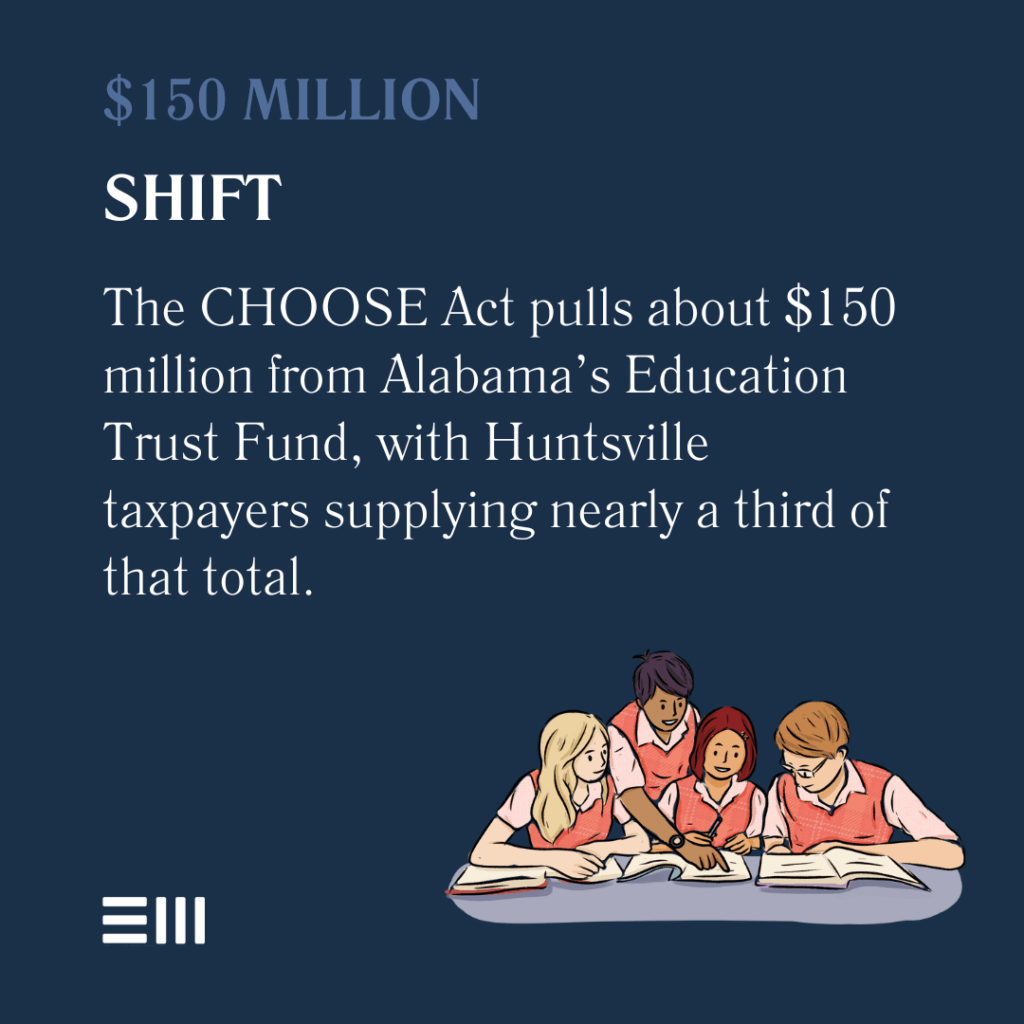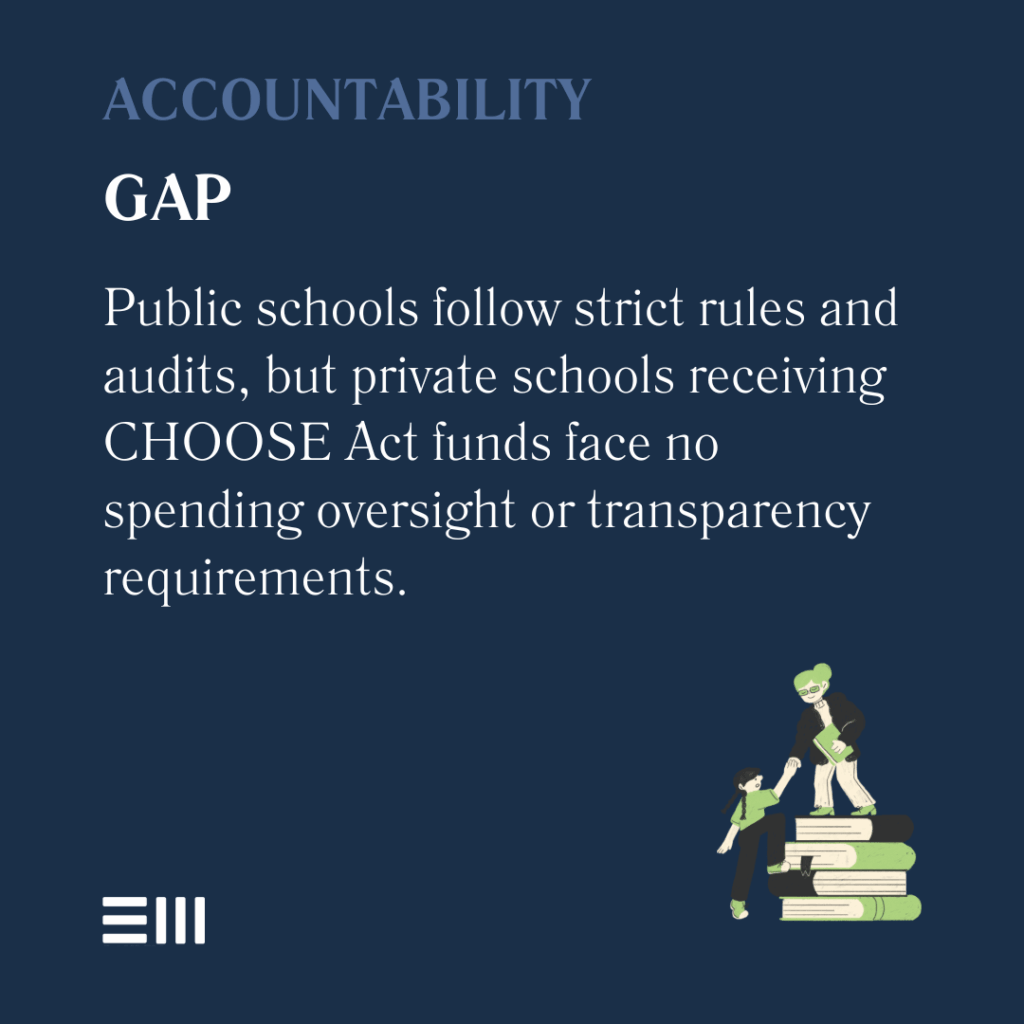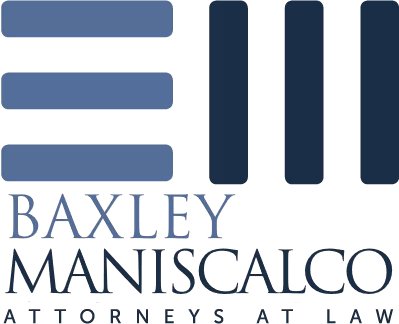
Huntsville City School Board Member Andrea Alvarez is rallying support to legally challenge Alabama’s new CHOOSE Act, arguing the school voucher program unconstitutionally diverts millions from public education while creating an unequal system without transparency.
As the program begins its first year, Alvarez seeks to build a statewide coalition to file suit against what she calls “inherently wrong” legislation.
Understanding the CHOOSE Act
Passed in 2024 and implemented for the 2025-2026 school year, the CHOOSE Act provides:
- $7,000 per student for private school tuition.
- Funds delivered as education savings accounts to families.
- Money drawn from the Education Trust Fund (ETF).
Lawmakers who supported the legislation argued it gives families greater choice in their children’s education. However, critics like Alvarez see it as a fundamental threat to public education funding.
The $150 Million Question
Alvarez breaks down the financial impact with stark numbers:
- The CHOOSE Act uses approximately $150 million from the ETF.
- Huntsville City Schools contributes roughly $50 million to the ETF.
- This means Huntsville taxpayers fund about one-third of the voucher program.
“I don’t think Huntsville residents understand that,” Alvarez stated, emphasizing the disproportionate burden on her district’s taxpayers.

Accountability vs. Autonomy
The core of Alvarez’s argument centers on fundamental inequities between public and private schools.
Public schools must:
- Follow hundreds of state laws and regulations.
- Account for every dollar spent.
- Restrict purchases to education-related items.
- Maintain transparency with taxpayers.
- Accept all students regardless of ability.
These requirements ensure public accountability but also create administrative burdens that private schools avoid entirely.
Private schools can:
- Operate without state oversight.
- Use funds without disclosure requirements.
- Spend money on any purpose.
- Select students at their discretion.
- Avoid accountability measures.
This freedom from regulation allows flexibility but eliminates the transparency that taxpayers expect when public funds are involved.
“I personally just think it’s inherently wrong that we have two different systems: one that has transparency and accountability to taxpayers, and one that does not,” Alvarez explained.

The Transparency Problem
Once CHOOSE Act funds reach private schools as tuition payments, there’s no mechanism to track how the money is spent. Alvarez highlighted this concern:
“We have rules. You can’t buy certain things. It has to be education-related. Once you give that tuition to a [private] school, they can do anything with it.”
This lack of oversight means:
- No requirement to report spending.
- No audits of fund usage.
- No accountability to taxpayers.
- No guarantee money benefits students.
Without these basic safeguards, public funds essentially become private resources with no strings attached.
Constitutional Concerns
Alvarez is building her case on multiple constitutional grounds:
#1: Education Trust Fund Violation
The ETF was created specifically to fund public education. Diverting these funds to private schools may violate the fund’s intended purpose.
#2: Unfunded Mandates
Public schools face numerous state requirements without adequate funding, while private schools receive state money without any mandates.
#3: Separate But Equal
The creation of two different educational systems with different rules raises constitutional equality questions.
“How do you have separate but equal?” Alvarez asked, invoking historical civil rights language.
The Funding Formula Problem
Alabama funds public schools based on:
- Average daily attendance from the previous year.
- Complex formulas accounting for various factors.
- Strict reporting requirements.
This system ensures accountability but creates predictability challenges for budget planning.
CHOOSE Act funding operates differently:
- Direct payment to families.
- No attendance requirements.
- No performance metrics.
“These people are just getting it named with their child’s name,” Alvarez explained, contrasting the stark differences in accountability measures between the two systems.
Building a Coalition
Currently, no lawsuit has been filed against the CHOOSE Act in Alabama.
Alvarez is working to:
- Gather support from other public school systems.
- Document the financial impact across districts.
- Build a legal case based on constitutional grounds.
- Unite stakeholders concerned about public education.
Success will depend on whether enough districts see the program as a threat worth challenging in court.
What’s at Stake
The debate over the CHOOSE Act reflects fundamental questions about:
- The purpose of public education funding
- Taxpayer accountability
- Educational equity
- The role of private schools in public policy
With $150 million annually flowing from public to private education, the outcome of any legal challenge could reshape Alabama’s educational landscape for generations.
Moving Forward
As Alvarez continues building support for legal action, several questions remain:
- Will other school boards join the challenge?
- How will courts interpret Alabama’s constitution?
- What happens to students currently using vouchers?
- Can the legislature modify the program to address concerns?
The answers may determine whether Alabama’s experiment with school choice continues or joins Ohio and Utah in having such programs declared unconstitutional.
For now, the CHOOSE Act proceeds while public school advocates organize their response. Whether through legislative modification or judicial intervention, the program’s future remains uncertain as both sides prepare for what could become a defining battle over educational funding in Alabama.
Can't find what you're looking for? Search our site below.










